Distance Learning and Virtual Teaching Tips

You may have begun the year fully virtual or just now switching to Distance Learning due to the rising cases of covid-19. Either way, many teachers are looking at ways to engage their students through online learning during this unprecedented time in education.
I recently met with a diverse group of high school and middle school social studies teachers (on Zoom, of course) to talk about what's working and what's not as far as virtual learning.
Included here is a list of our best advice to those of you who are teaching virtually. There's obviously various learning platforms and forms this can take (synchronous or asynchronous). However, these tips should be helpful no matter how your school is conducting things.
1) Over explain everything!
No matter how simple or obvious you think a topic or assignment might be, explain it as simply as you can and then explain it again.
Provide written instructions that students can see on screen while you explain things and then make sure they...
Google Classroom Resources for World History
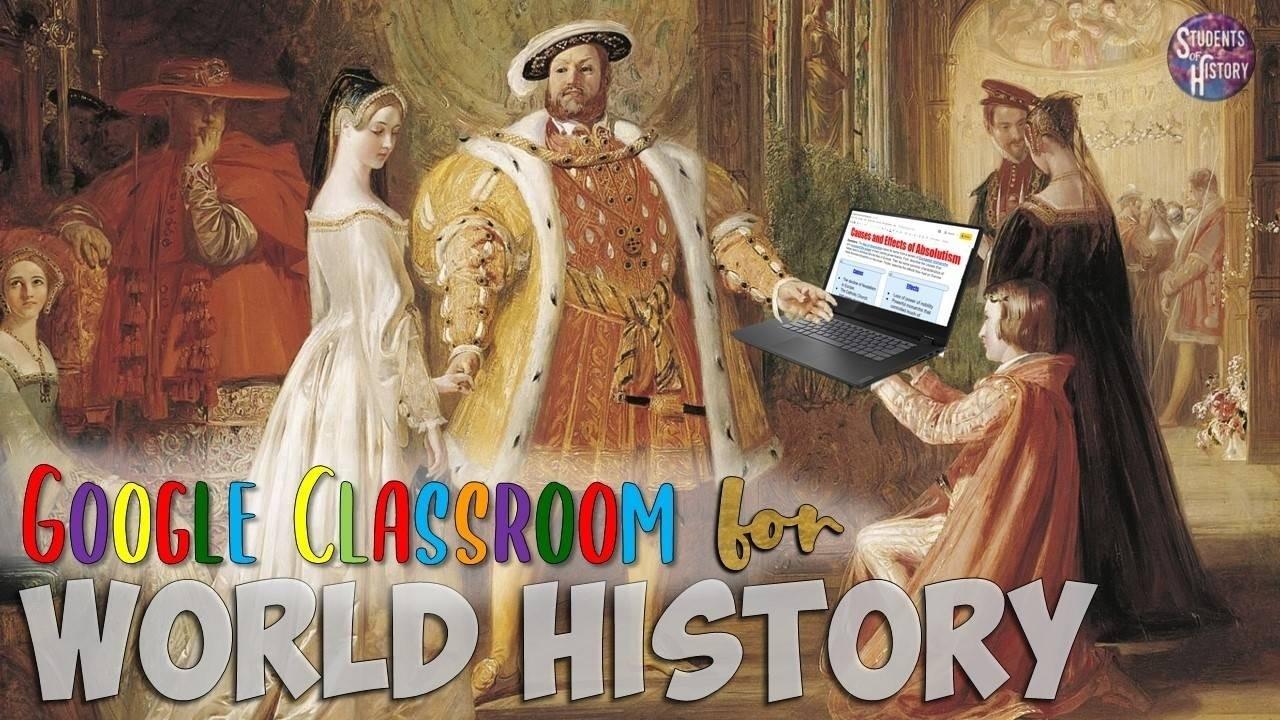
Before the scourge of COVID-19 thrust schools across the world headlong into Distance Learning, digital resources were already gaining use in classrooms. For a good reason also. When technology is used effectively, it’s an amazing tool for teaching World History.
If your Distance Learning experience was stressful or just mildly exhausting, there’s still many exceptional digital activities you can (and should) still be using with Google Classroom in a traditional school setting, through distance learning, or in a blended learning format.
I never ran a paperless classroom and don’t think I would ever go fully paperless. There’s too many assignments that lend themselves better to printable PDFs done by hand. I think Distance Learning taught us all the limits of teaching through technology.
However, I do incorporate Google Docs, Slides, and digital interactive activities in every unit of World History throughout the year. There are just so many amazing digital resources available tha...
Announcing the 2020 Students of History Scholarship Winners
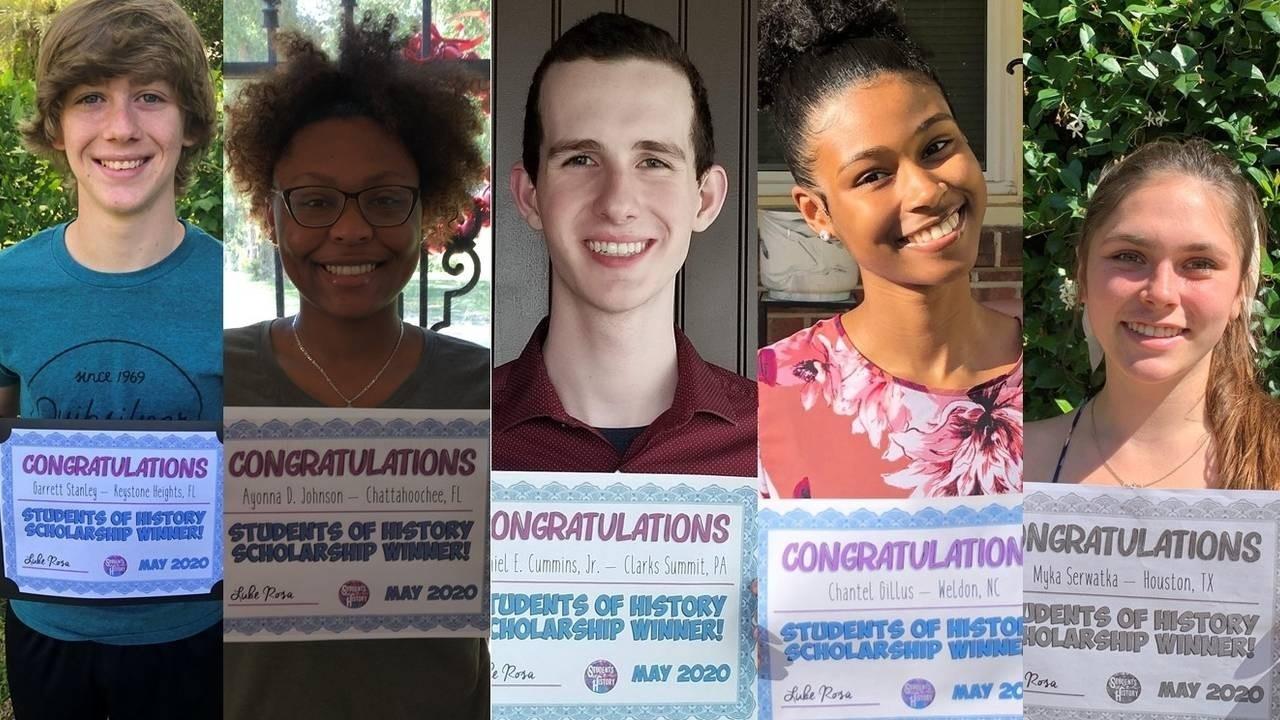
Selecting a scholarship winner is difficult every year. This year was even more so. Each essay served as a tangible reminder of another student who, after working hard through years of schooling, would miss graduation, prom, senior awards, etc.
One scholarship for a single student just didn't seem like enough.
So, this year I'm proud to honor seven graduating seniors with scholarship awards. Each of these students wrote a wonderful reflection on the most important lesson they learned from their social studies classes and also received a glowing recommendation from a teacher.
Thank you to all the teachers who nominated students and to everyone who applied. I wish I could have awarded more of you. I wish all of you the best of luck and good health in the coming year.
So, without further ado, here are the ...
2020 Students of History Scholarship Recipients

Daniel Cummins, Jr. - $1,000 Scholarship Winner
"Although I may not be able to graduate with my peers this spring,...
Google Classroom Resources for US History
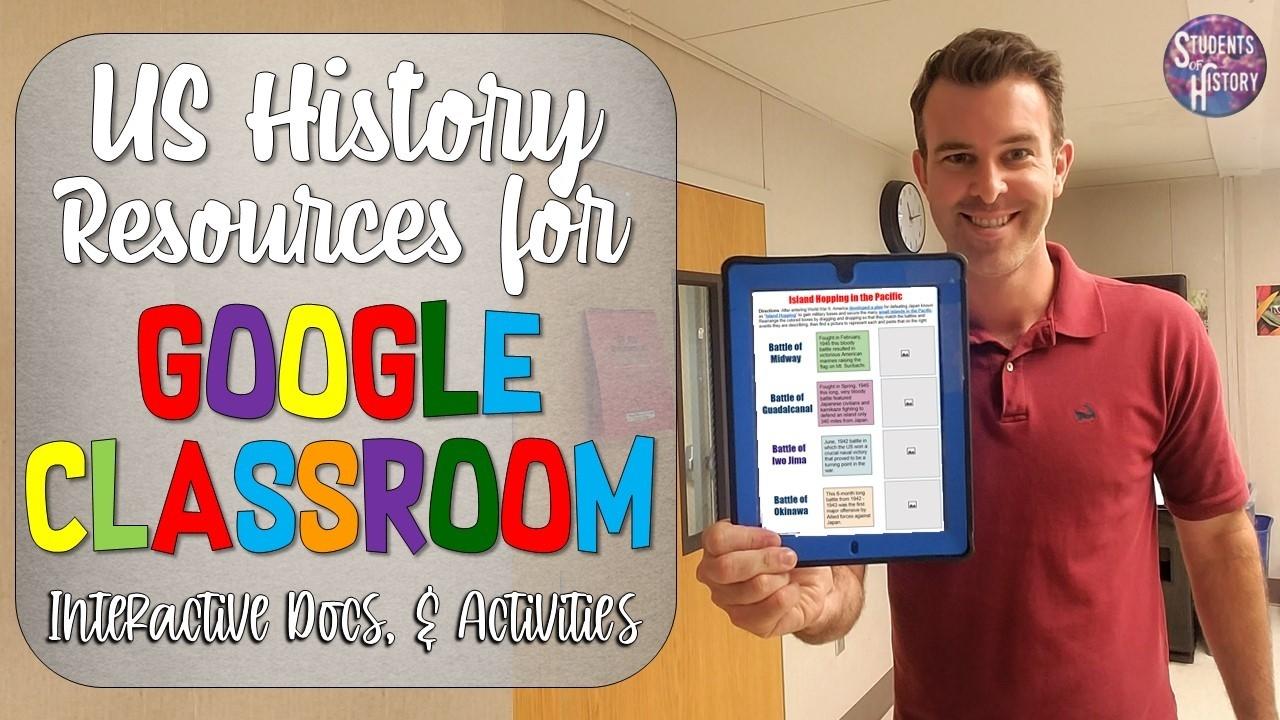
Going digital was already one of the biggest trends in education when COVID-19 hit and schools across the world were forced to move to Distance Learning. Suddenly, all teachers were thrust into digital resources, Google Docs, Zoom, and all the headaches that came with them.
No matter if your experience with Distance Learning was brutal or just a small struggle, there are many excellent resources you can use with Google Classroom now and in the future.
I never ran a paperless classroom and don’t think I'd ever go fully paperless. There’s too many activities that lend themselves better to doing by hand. Distance Learning taught the limits of teaching through technology.
However, I do integrate many Google Docs, Slides, and digital interactive assignments into every unit of US History. When technology is used effectively, it’s an amazing resource. There are many digital learning tools available that enhance student learning.
Digital Interactive Notebooks for US History
I based my...
World History Worksheets
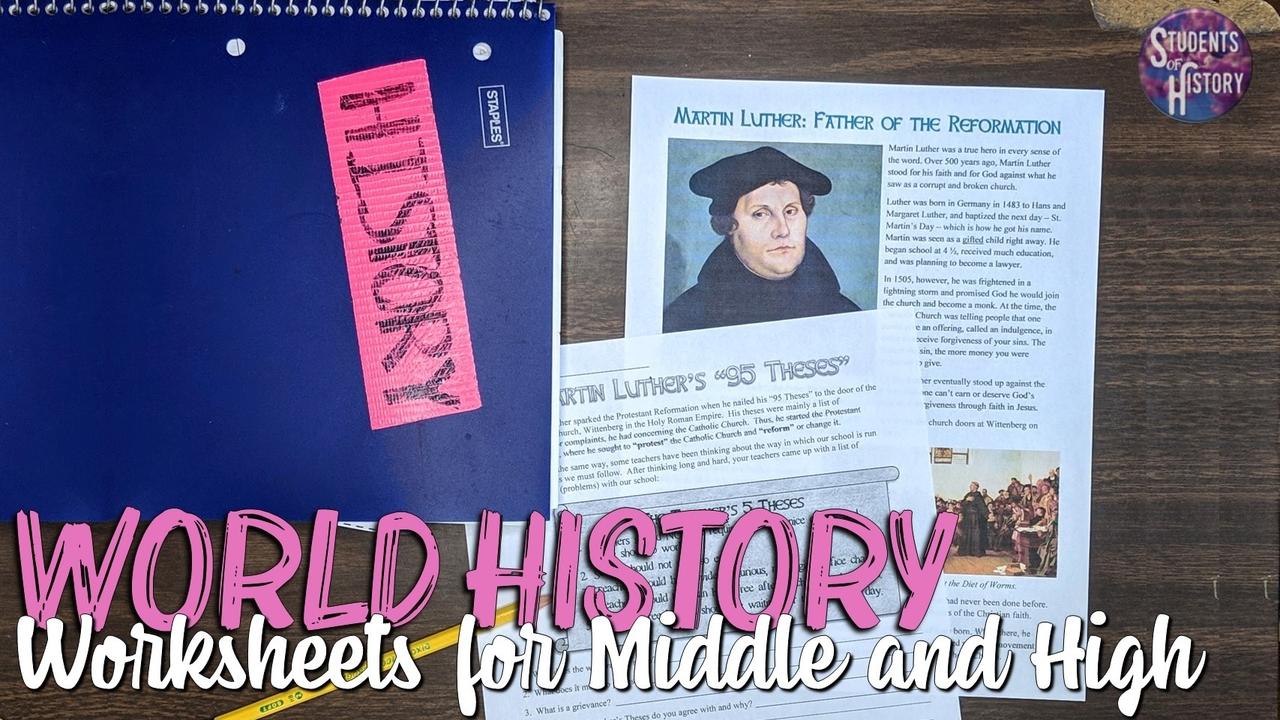
If you're a World History teacher looking for engaging assignments and worksheets for your high school or middle school classroom, I have tons to share, including FREE worksheets for every unit in your curriculum here.
While they're sometimes maligned, worksheets can be great for helping students analyze primary sources, understand an event through a secondary source, or assess their skill in an area of social studies.
Our World History worksheets come in PDF format for easy printing and with Google Docs versions as well for easy implementation into Google Classroom.
They're also easy to differentiate across grades, ability levels, and for special education students with accommodations. The lesson plans our subscription provides help you to differentiate and select the best worksheets and activities for your students.
This could mean kids working together in pairs, cooperative learning groups, or mixed-ability pairings to help give you more time to provide support to all your s...
Digital Learning Activities for US History
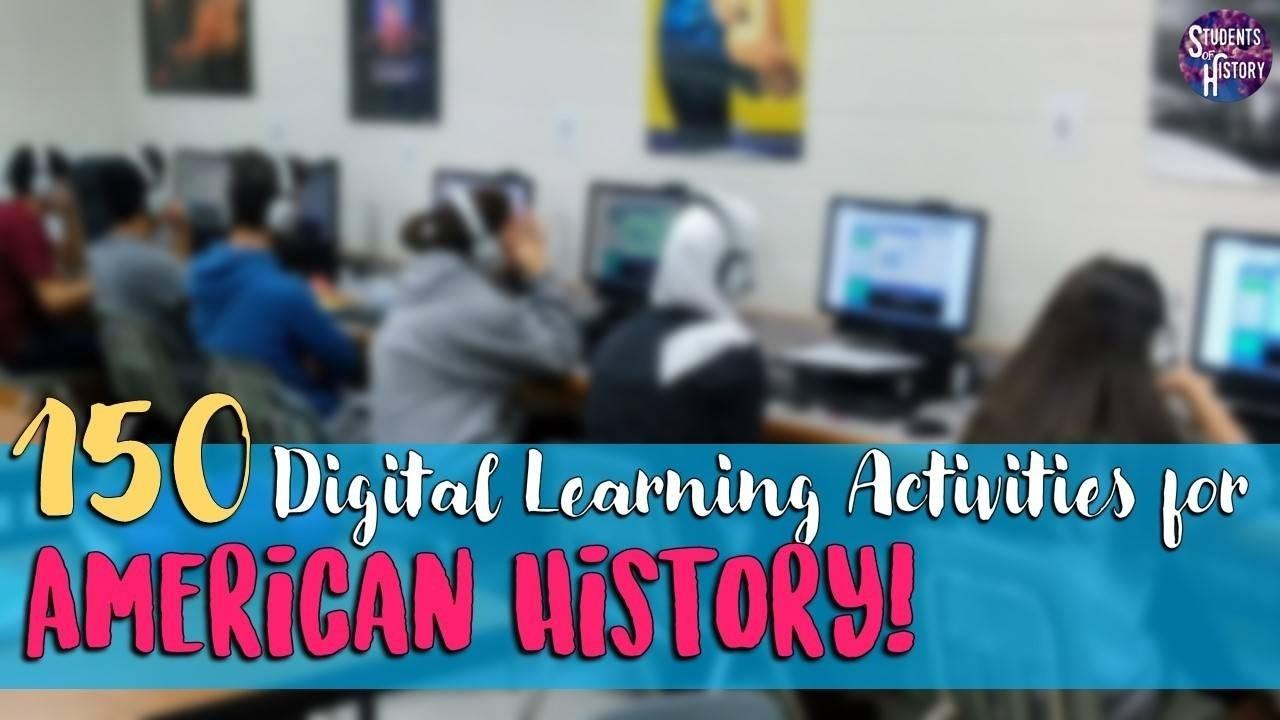
If you've been forced to move to Distance Learning, have recently gone 1:1 in your school, or just want to use more Digital activities with your students, my Google Drive notebook sets are an amazing resource for your social studies students.
Each digital interactive notebook set covers an entire unit in US History and include 8 to 15 pages of activities. Each page features short directions and links to online sources for kids to learn about the topics covered. There's over 150 pages on US History in all!
The activities on each page vary to ensure students are learning in various ways. Some pages have students drag-and-drop events along timelines of important events. Other pages require students to insert images or respond to prompts. The variety is perfect for keeping students engaged.
There's also pages on vocabulary, geography, primary sources, and all the important information students need to know about each unit in US History.
Students type directly on the pages, insert i...
Tips for Teaching with Remote Learning

Many school districts are working now on how to best support teachers and students in remote learning. Whether it is because students need to remain at home until the coronavirus subdues or there is just a massive blizzard that shuts down school for a period, remote learning is something to prepare for.
While I have not yet taught in a fully-remote learning structure, I began to use “blended learning” strategies a few years ago. Like it sounds, blended learning is a hybrid strategy that delivers some content online but also includes lessons in school to support student learning.
It was in this blended learning environment that I began to create and use “flipped classroom” videos to teach the basic concepts of some units. I recorded video lectures and uploaded them to YouTube. Students received guided notes worksheets and were assigned a video for homework. These were all fairly short and easy for students to complete on any device. They also saved us a lot of class time for more pr...
70 World History Primary and Secondary Source Activities
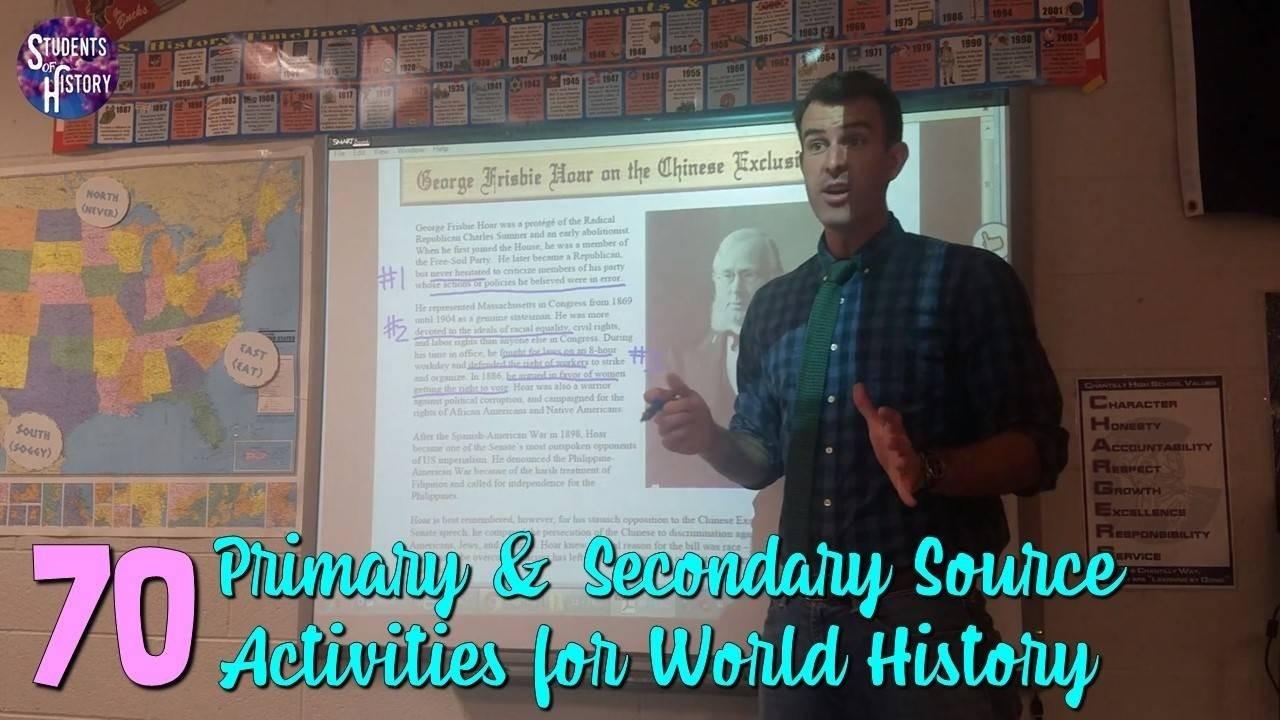
The benefits of using primary sources in the classroom have long been known to social studies teachers and education leaders. Whereas bias can misinformation can sometimes be found in textbooks or online sources, primary source activities allow students to directly analyze and interpret history.
Primary Sources expose students to different perspectives in World History and allow them to draw conclusions about important historical events.
Secondary sources are valuable as well. These can be used to introduce students to a topic, provide context to historical events, and ensure that students understand the major people, places, and events of a topic.
An important aspect of teaching social studies is blending good primary and secondary sources into all of your units while making sure that students understand the differences (and benefits) of both.

A difficult part of that for many teachers is finding good primary and secondary sources that students can understand. Often primary ...
50 Primary Source Document Activities for US History

Social Studies teachers and education leaders have long preached the benefits of using Primary source materials in the classroom. These documents are essential to helping students understand history and encourage analytical thinking.
Primary sources allow teachers to expose students to different perspectives throughout US History and allow students to draw their own conclusions about important historical events.

Many studies have shows textbooks to contain bias or even inaccurate information in some cases. Primary sources bring students directly to the history and eliminate bias in the classroom.
Finding good primary sources that students can understand is the tough part. Often primary sources are at a higher reading-level that students struggle with or are too long to be digested in a class period or for a single assignment.
Over the past few years, I dedicated myself to curating and editing engaging primary source resources for my US History classes. I have spent countless hou...
US History Printable Timeline Activities
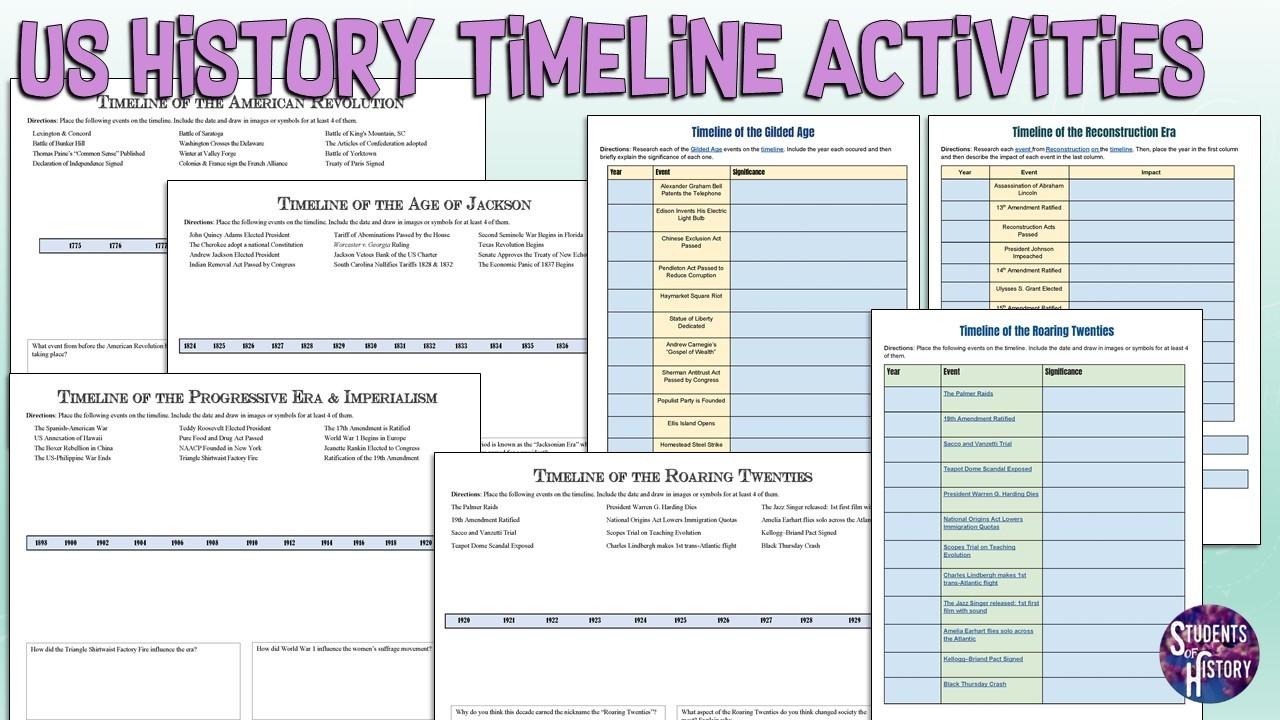
If you teach US History in middle school or high school, you how how important timelines are. They organize events in a simple visual way, help students see cause and effect, and are perfect for showing students all the key events that students need to know in any unit.
I teach ALL of American History, from the Colonies through to Modern America and include printable timeline worksheets in the packets I give students for each unit we cover.

When you do cover so much content in a year, timelines become essential. We often don't have that much time to spend on any one unit. That's why the packets become very effective at showing students exactly what they need to know. The printable timeline pages are perfect for giving students a chance to see each significant event in that.
I make them very simple to use. The timelines are included in a PDF file and a Google Doc. I print out the PDF file of the entire packet at the start of each unit and give them to each student. They are resp...